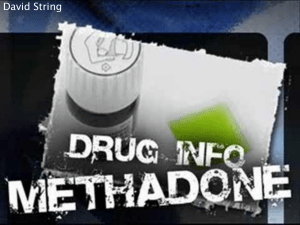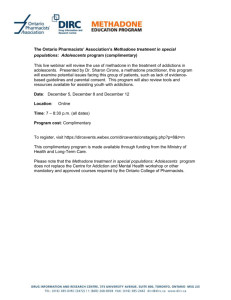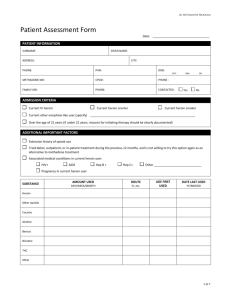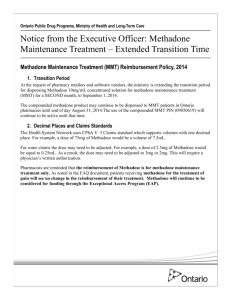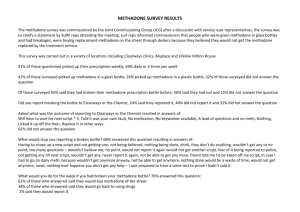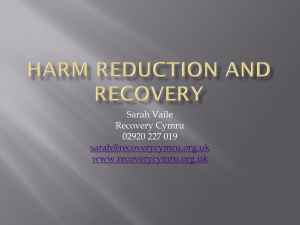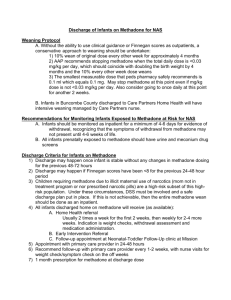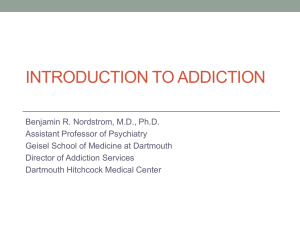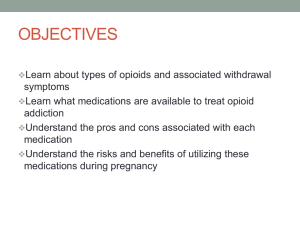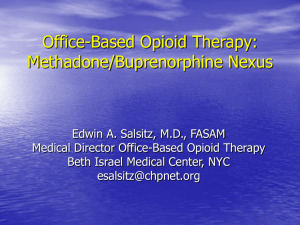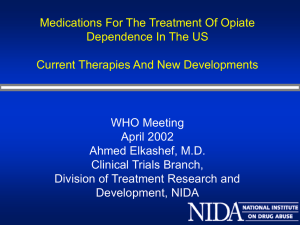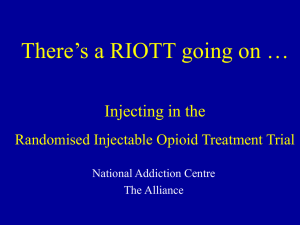BOOK QUIZ # 7
advertisement
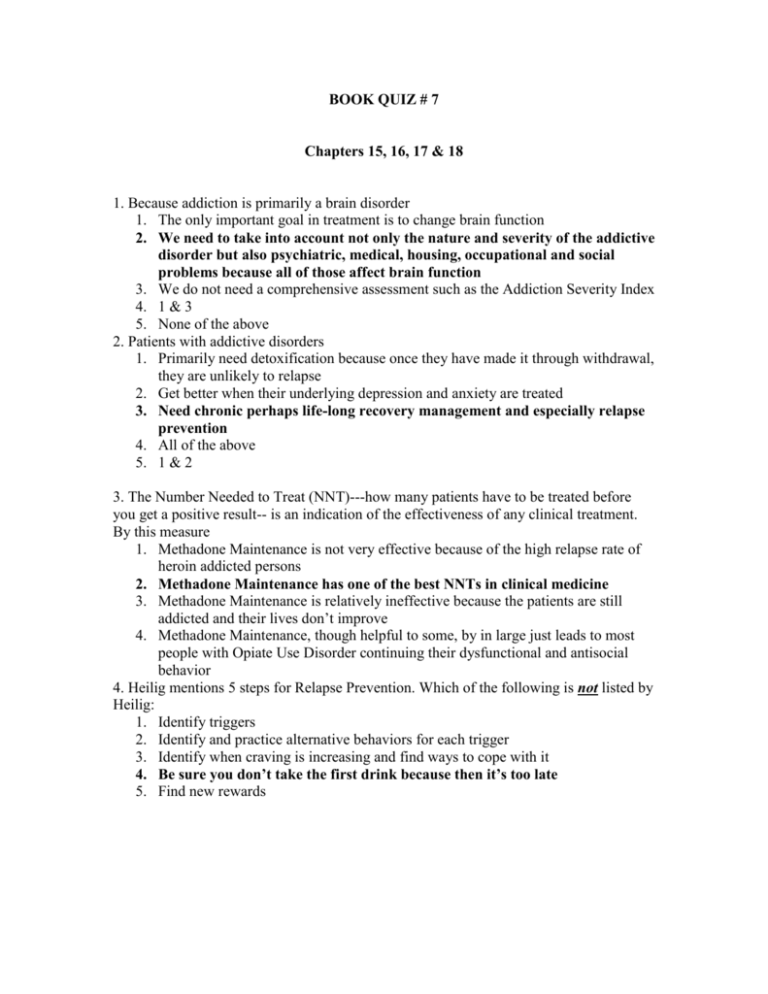
BOOK QUIZ # 7 Chapters 15, 16, 17 & 18 1. Because addiction is primarily a brain disorder 1. The only important goal in treatment is to change brain function 2. We need to take into account not only the nature and severity of the addictive disorder but also psychiatric, medical, housing, occupational and social problems because all of those affect brain function 3. We do not need a comprehensive assessment such as the Addiction Severity Index 4. 1 & 3 5. None of the above 2. Patients with addictive disorders 1. Primarily need detoxification because once they have made it through withdrawal, they are unlikely to relapse 2. Get better when their underlying depression and anxiety are treated 3. Need chronic perhaps life-long recovery management and especially relapse prevention 4. All of the above 5. 1 & 2 3. The Number Needed to Treat (NNT)---how many patients have to be treated before you get a positive result-- is an indication of the effectiveness of any clinical treatment. By this measure 1. Methadone Maintenance is not very effective because of the high relapse rate of heroin addicted persons 2. Methadone Maintenance has one of the best NNTs in clinical medicine 3. Methadone Maintenance is relatively ineffective because the patients are still addicted and their lives don’t improve 4. Methadone Maintenance, though helpful to some, by in large just leads to most people with Opiate Use Disorder continuing their dysfunctional and antisocial behavior 4. Heilig mentions 5 steps for Relapse Prevention. Which of the following is not listed by Heilig: 1. Identify triggers 2. Identify and practice alternative behaviors for each trigger 3. Identify when craving is increasing and find ways to cope with it 4. Be sure you don’t take the first drink because then it’s too late 5. Find new rewards 5. Adding Methadone to detox and psychosocial treatment increases the number of heroin addicted people still abstinent after a year from 1. 0% to 10% 2. 10% to 30% 3. 30% to 70% 4. 10% to 75% 6. Buprenorphine 1. Is less likely to cause overdose death than methadone 2. Is better at blocking the heroin high than methadone 3. Is more readily available for patients needing treatment than methadone 4. All of the above 5. None of the above 7. Nicotine replacement therapy (patch, gum, lozenges, etc.) is most similar to 1. Methadone maintenance 2. Acamprosate 3. Naltrexone 4. Antabuse 8. Varenicline (Chantix) is most similar to 1. Zyban 2. Naltrexone 3. Buprenorphine 4. Campral 9. Heilig criticizes AA’s reported recovery rates of 50 to 75% because 1. They are not based on an experimental study with random assignment to treatment and control groups 2. It’s based on a “completer analysis” that selects only those people who stayed with the program and thus had an inherently better chance of success 3. If you carry out an “intent to treat analysis” only 26% of the intent to treat population is still participating at the end of the first year 4. 1 & 3 5. 2 & 3 6. All of the above 10. The Minnesota Model of alcoholism treatment 1. Is a 30 day inpatient program 2. Is a 4 days a week for 4 weeks intensive outpatient program 3. Is a once a week outpatient group or individual program using CBT and relapse prevention training 4. Primarily depends on continuing motivational interviewing
